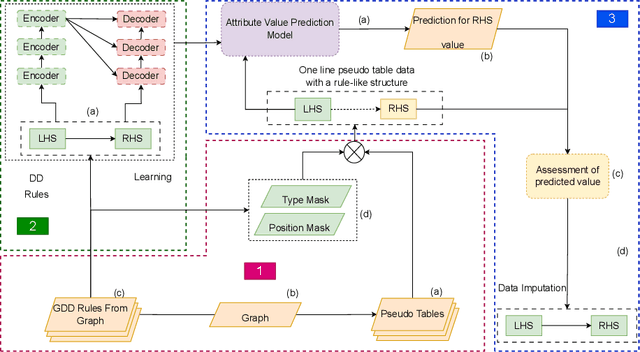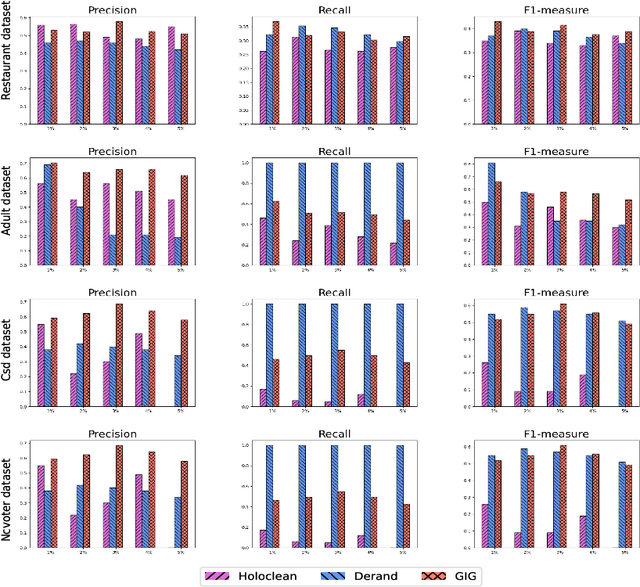Selasi Kwashie
GIG: Graph Data Imputation With Graph Differential Dependencies
Oct 21, 2024



Abstract:Data imputation addresses the challenge of imputing missing values in database instances, ensuring consistency with the overall semantics of the dataset. Although several heuristics which rely on statistical methods, and ad-hoc rules have been proposed. These do not generalise well and often lack data context. Consequently, they also lack explainability. The existing techniques also mostly focus on the relational data context making them unsuitable for wider application contexts such as in graph data. In this paper, we propose a graph data imputation approach called GIG which relies on graph differential dependencies (GDDs). GIG, learns the GDDs from a given knowledge graph, and uses these rules to train a transformer model which then predicts the value of missing data within the graph. By leveraging GDDs, GIG incoporates semantic knowledge into the data imputation process making it more reliable and explainable. Experimental results on seven real-world datasets highlight GIG's effectiveness compared to existing state-of-the-art approaches.
MAPX: An explainable model-agnostic framework for the detection of false information on social media networks
Sep 13, 2024Abstract:The automated detection of false information has become a fundamental task in combating the spread of "fake news" on online social media networks (OSMN) as it reduces the need for manual discernment by individuals. In the literature, leveraging various content or context features of OSMN documents have been found useful. However, most of the existing detection models often utilise these features in isolation without regard to the temporal and dynamic changes oft-seen in reality, thus, limiting the robustness of the models. Furthermore, there has been little to no consideration of the impact of the quality of documents' features on the trustworthiness of the final prediction. In this paper, we introduce a novel model-agnostic framework, called MAPX, which allows evidence based aggregation of predictions from existing models in an explainable manner. Indeed, the developed aggregation method is adaptive, dynamic and considers the quality of OSMN document features. Further, we perform extensive experiments on benchmarked fake news datasets to demonstrate the effectiveness of MAPX using various real-world data quality scenarios. Our empirical results show that the proposed framework consistently outperforms all state-of-the-art models evaluated. For reproducibility, a demo of MAPX is available at \href{https://github.com/SCondran/MAPX_framework}{this link}
 Add to Chrome
Add to Chrome Add to Firefox
Add to Firefox Add to Edge
Add to Edge